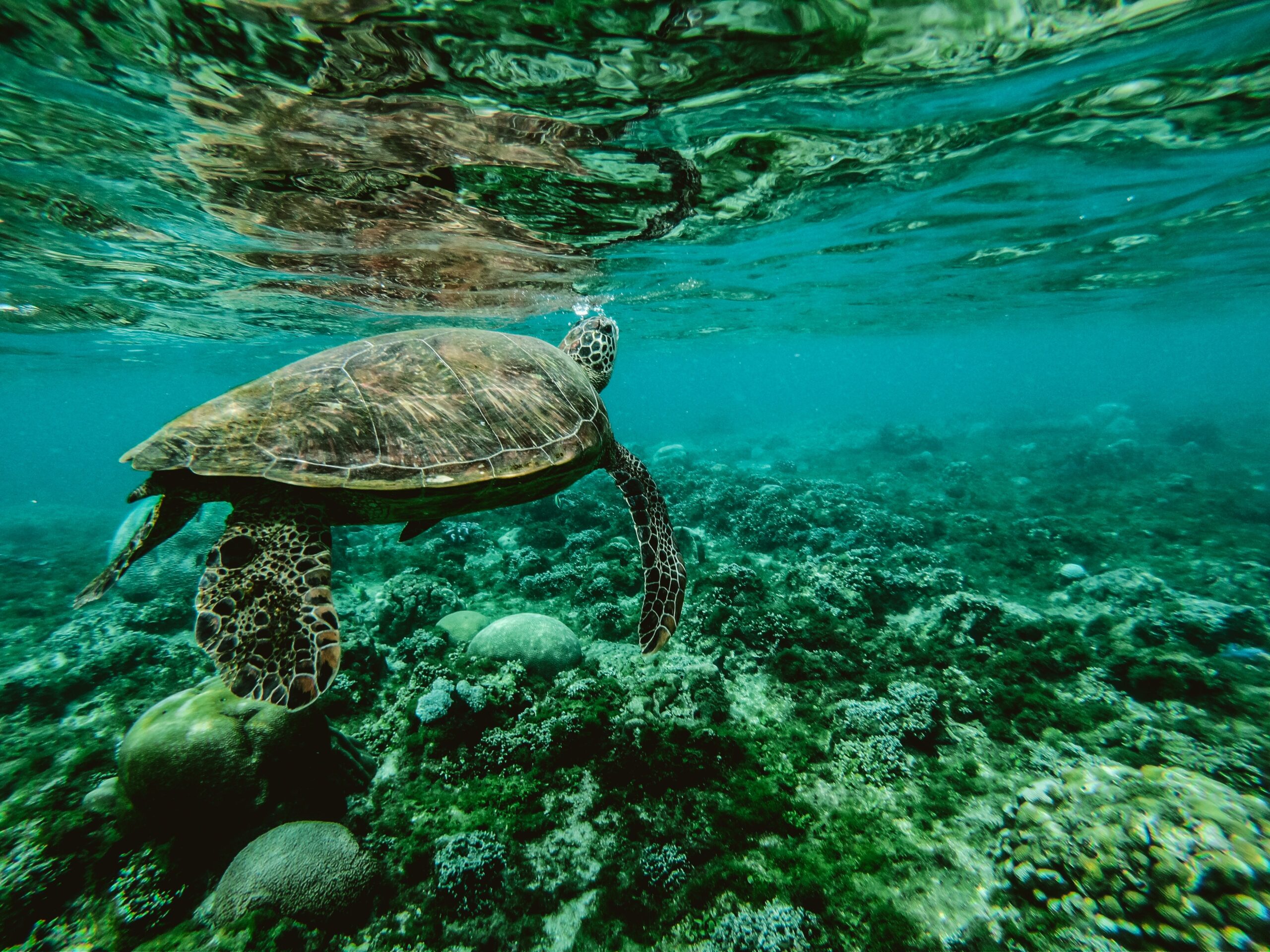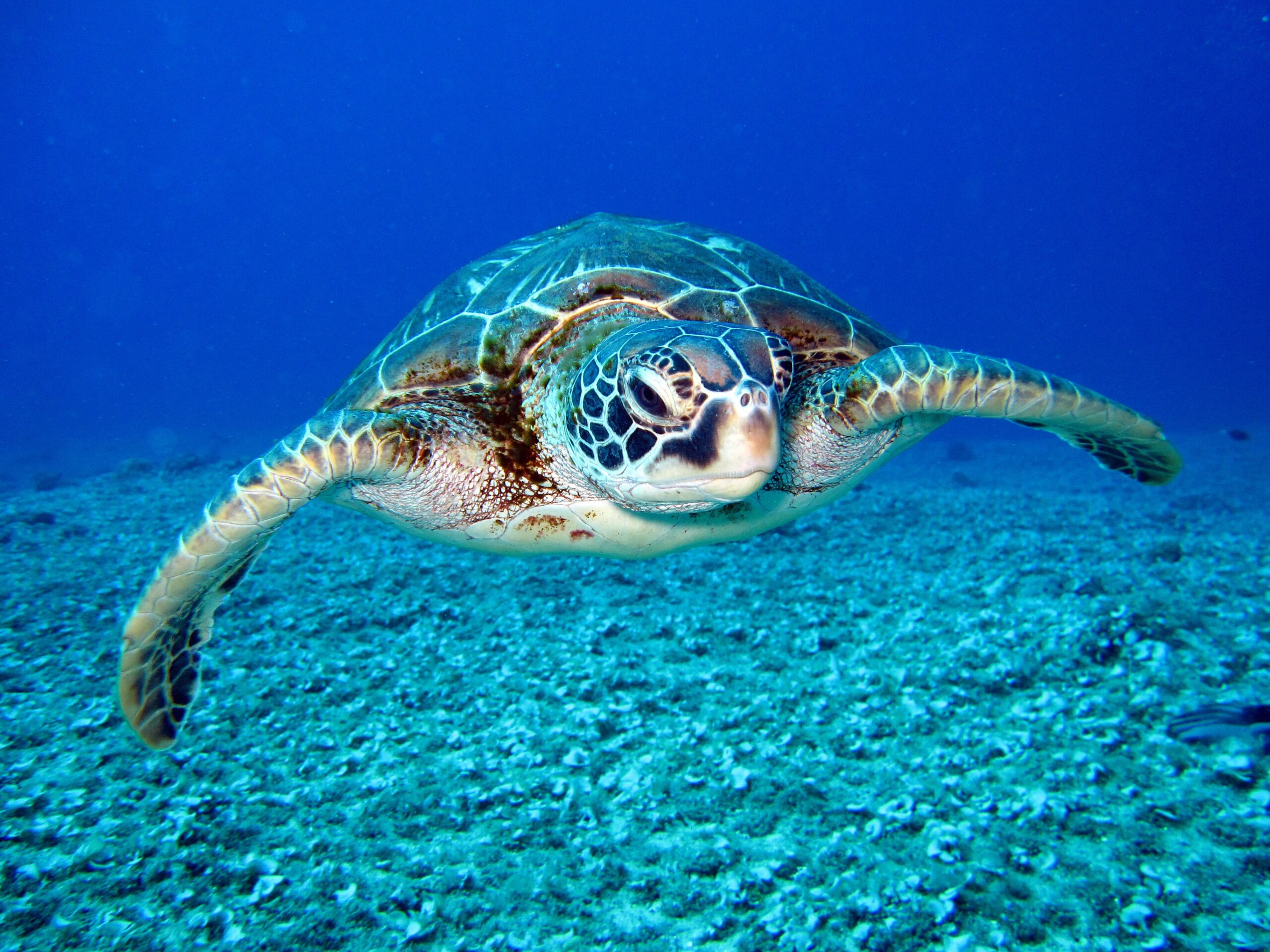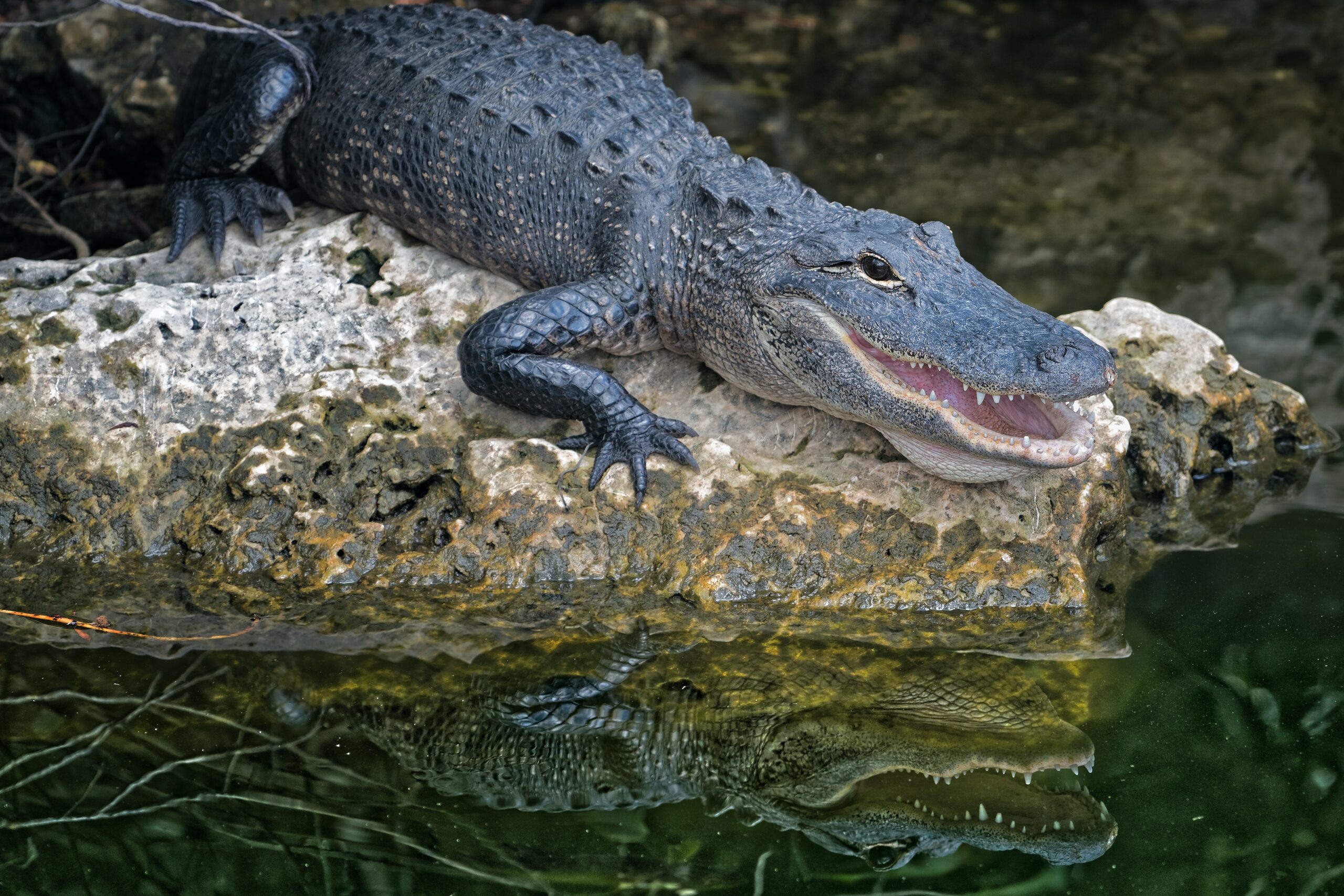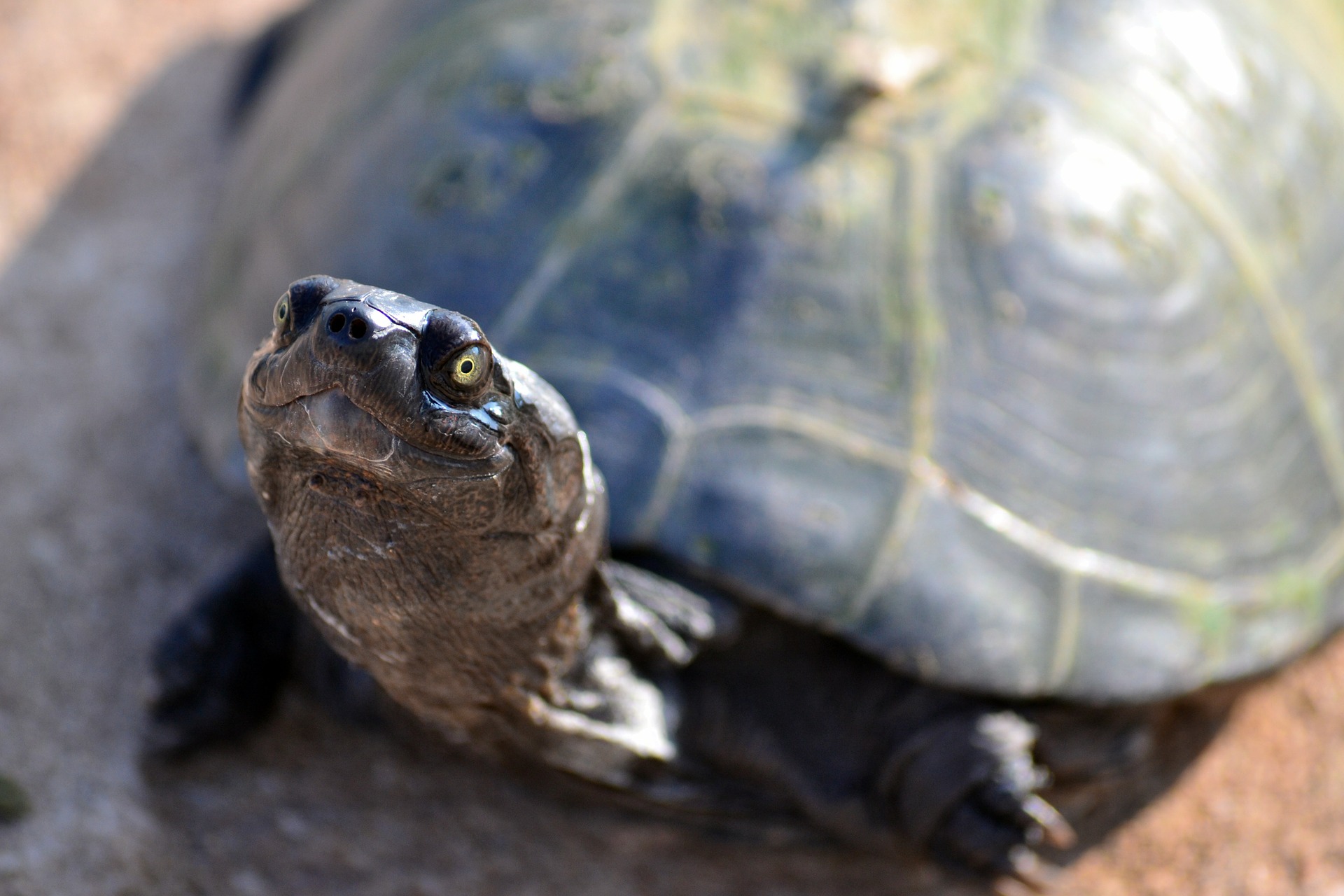Sea Turtles
- Identification Information: Streamlines bodies and large flippers that are well adapted to life in the ocean. Five out of the seven sea turtle species have been seen in the waters of SC. These include the Green Turtle, Kemp’s Ridley Turtle, Hawksbill Turtle, Leatherback Turtle, and Loggerhead Turtle. The Loggerhead Turtle is by far the most common sea turtle in Beaufort County and is SC’s state reptile. Loggerheads are named for their massive heads and powerful jaws. They have an oval-shaped shell that is dark reddish-brown while their flippers and bottom shell are light yellow. They can weigh as much as 300 pounds and reach up to 4 feet in shell length.
- Lifespan: 70 years or more
- Diet: Loggerheads feed on hard shelled prey, such as whelks, crustaceans, and conch. Other turtles have beaks designed for eating crabs, grasses, and jellyfish.
- Fun Fact: Sea Turtle nesting season is from May to October. During the night females will leave the ocean to dig a cavity nest with their back flippers. She will deposit 100 to 120 ping-pong sized eggs into the nest, cover it will sand, and return to the ocean. The eggs will incubate in the nest for 60 days. Temperature of the nest determines the hatchlings sex – warmer temperature produce females and cooler temperature produce males. One in 1,000 sea turtles survive to adulthood. It takes 25-30 years for Loggerhead Turtles to mature and reproduce.
American Alligator
Alligator mississipiensis
- Identification Information: The only type of crocodilian in SC. Females average 8.2 feet and weigh around 200 pounds while males average 11.2 feet and weigh 400-500 pounds. The largest alligator on record weighed 1,011.5 pounds and was 15.9 feet long. Hatchlings are only 6-8 inches. Alligators are about 50% tail and 50% head and body.
- Lifespan: 35-50 years in the wild and 60-80 years in captivity.
- Diet: Alligators are opportunistic feeders and will eat insects, fish, snakes, turtles, frogs, other alligators, birds, mice, raccoons, crabs, and even deer. They have 75-80 teeth with a bite force over 2,000 pounds.
- Fun Fact: Alligators begin courtship and breeding in April-May. In June-July females build a large shoreline nest of leaf litter and mud. In the nest females will lay 20-60 eggs that are 3 inches long. The eggs will stay in the nest for 65 days. The nest temperature determines the hatchlings’ sex. Temperatures above 93° F and below 87° F will be females while temperature between this range will be males. Mother alligators will protect their young until they are about 3 years old. The young stay in the vicinity of their mother and when one feels threatened it will make a gulping sound that can be heard several feet away.
Eastern Diamondback Terrapin
Malaclemys terrapin centrata
- Identification Information: Diamondback Terrapins are the most variable turtles in North American and no 2 look the same. Their top shell is covered with scutes or bony plates that are diamond shaped, ranging in color from brown, orange, green, or almost black. The skin can range anywhere from dark gray to stark white and be covered in dark spots. Males are much smaller than females, 5-6 inches, while females are considerably larger, up to 9 inches.
- Lifespan: Up t0 25 years in the wild.
- Diet: A variety of shellfish and crustaceans with marsh periwinkle snails and blue crabs being their favorite.
- Fun Fact: Diamondback Terrapins are the only turtle that inhabit estuaries and saltwater marshes. At one time they were endangered due to their meat being used in terrapin soup. Today, terrapins are no longer endangered.
All information presented on this page was sourced from the University of Georgia Herpetology Program
Special Shoutout to Jessica Kochman from the Port Royal Sound Foundation for her help on this page! Be sure to check out their website to learn more about their awesome events and activities!





